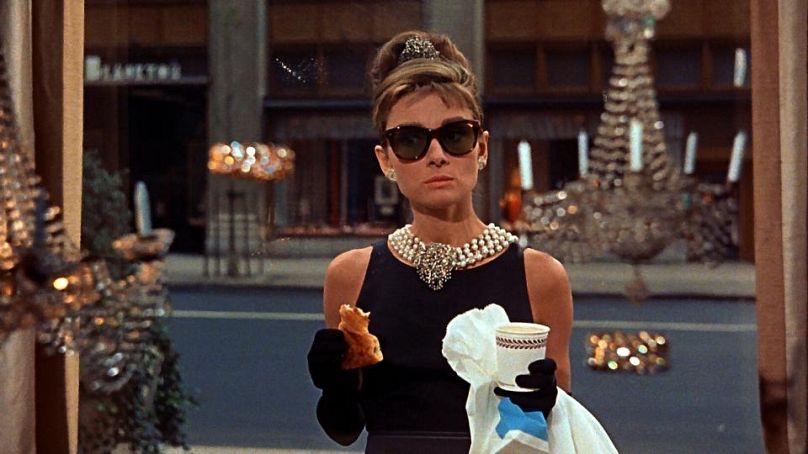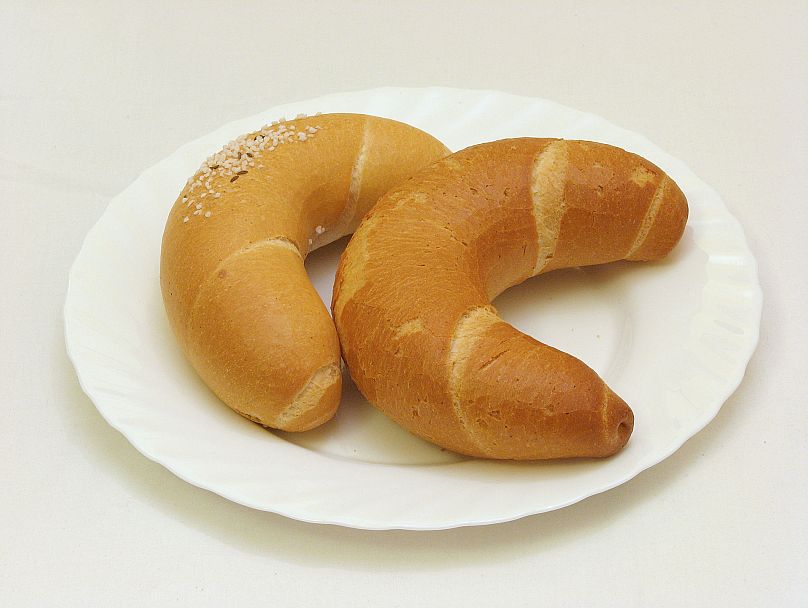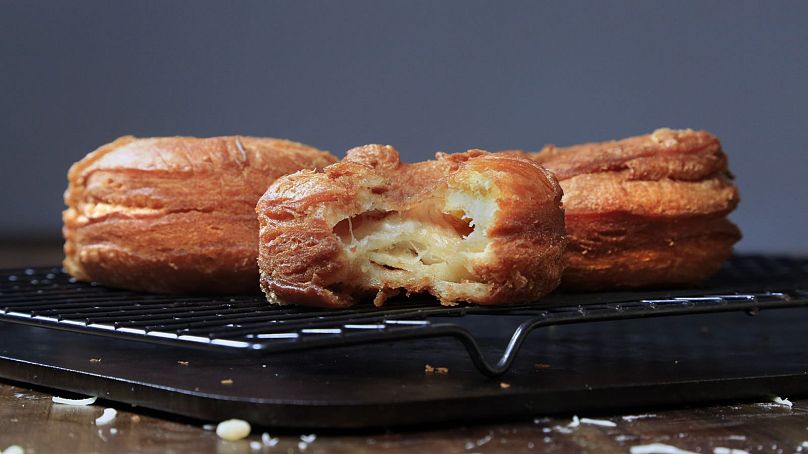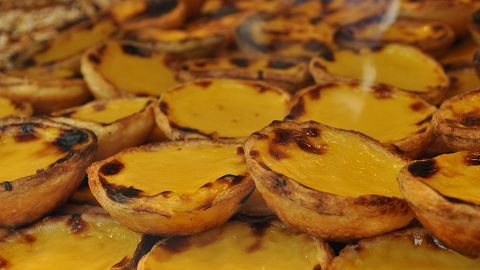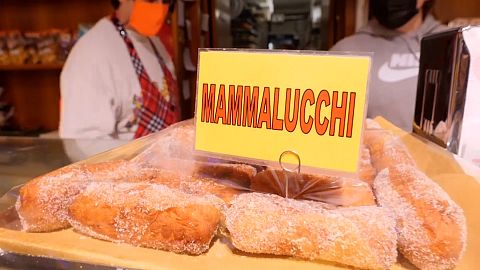From cronuts to crookies, the croissant kickstarted an age of social media food trends while remaining an icon of French culture and cuisine.
There’s no better way to start the day than with a croissant, those golden warm cocoons of buttery crunch both messy and joyful.
And while nobody needs an excuse to eat one, today just so happens to be National Croissant Day, a chance to celebrate the humble crescent pastry and its history that dates all the way back to the 13th century.
Whether filled with ham and cheese, or dark chocolate ganache - like Meryl Streep makes them in It's Complicated, they’re a staple of French cuisine, conjuring images of lazy mornings sitting outside Parisian cafes, sipping coffee and contemplating Camus.
Over the last decade, their versatility paired with the rise of social media food trends has led to them being frankensteined into all sorts of Americanised hybrids, mostly notably the cronut (croissant x doughnut) and more recently the crookie (croissant x cookie dough).
We’re firm believers, however, that you can’t go wrong with the classic. So, go get yourself one, STAT, and enjoy the following history of the croissant and its modern day evolutions - just try not to get flakes all over your lap or keyboard while reading.
The croissant isn’t actually French
Shocking, we know, don't choke, let us explain.
While croissants have become synonymous with French culture, they actually originated in Vienna, Austria as a style of viennoiserie pastries called kipferl.
Commonly filled with nuts and varied in size, Kipferl are denser than traditional croissants. It was the development of yeasted laminated dough that led to the pastry as we now know it, the first-documented French recipe by a baker named Sylvain Claudius Goy in 1915, according to The Institute of Culinary education.
This laminated texture is key to the croissant’s deliciousness, thin layers of butter and dough gently folded over one another and baked until golden brown to create a crunch that gives way to a fluffy centre.
Thus, the croissant became a symbol of French cuisine, officially recognised as a national product by the French government in 1920.
The invention of the cronut
The simplicity of the croissant and its widespread popularity has led to it being adapted and contorted into all sorts of iterations across the world.
In Spain, this takes the form of the Xuixo, a deep-fried and sugar-powdered chunk of pastry filled with creme catalana, while in Italy, there's the cornetto, which are thicker, more aromatic and made with eggs.
Every country has its own viennoiserie pastry spin, but when it comes to the French croissant in particular, it’s become a pioneer of bizarre social media food trends - an added novelty to its sacred cultural status being mutated with American treats.
This all began with the Cronut when, in 2013, French pastry chef Dominique Ansel decided to combine a croissant with a doughnut for his New York bakery.
“We change our menus frequently, and we wanted to create something special for Mother's Day,” Ansel told The Galilee Culinary Institute. “After about two months of testing and ten different recipes, we decided to call it a Cronut - something that resembled a donut but was made with a laminated dough with beautifully flaky layers. A blogger friend of ours took a photo and two days later, there were 150 people in line outside.”
The debut batch were rose vanilla flavoured, glazed in pink and sprinkled with crystallised rose petals - an aesthetic destined for early Instagram greatness. Now trademarked by Ansel, the cronut was so popular that it became the first ever viral pastry, sparking imitations across Europe and still to this day a popular addition at many boulangeries.
From here on, the croissant cross-breeds only got crazier. In the same year as the cronut, Australian baker Kate Reid, of Lune Croissanterie, unveiled the cruffin (muffin x croissant), later followed by the tacro (taco x croissant).
Last year saw the Crookie's (cookie x croissant) takeover, with Paris-based pâtissier Stéphane Louvard selling over 2,000 a day after a TikTok influencer shared them.
Part novelty, part capitalistic necessity, hybrid food trends have become a way for bakers to both test themselves creatively, but also to survive in a fiercely competitive market where success is so often dictated by social media algorithms.
These trends move fast though, the next frankensteined food always around the corner as influencers excitedly tell us to “run not walk” to something we’ll likely try once and be disappointed by.
Crookies come and go, but croissants are forever. An endless source of inspiration and life-affirming mmmm, no bad day can’t be made a little better with a hot croissant and a cup of coffee. Enjoy yours, and happy National Croissant Day.













